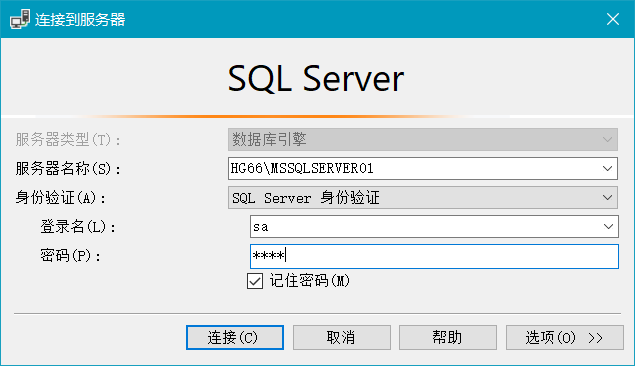没有口水与汗水,就没有成功的泪水。早安!有时,我们以为赢了,其实,我们输了!因为,我们赢了"面子",却输了"里子"!早安!
注:此处“重复”非完全重复,意为某字段数据重复 HZT表结构
ID int
Title nvarchar(50)
AddDate datetime
数据
一. 查找重复记录
1. 查找全部重复记录
Select * From 表 Where 重复字段 In (Select 重复字段 From 表 Group By 重复字段 Having Count(*)>1) 2. 过滤重复记录(只显示一条)
Select * From HZT Where ID In (Select Max(ID) From HZT Group By Title)
注:此处显示ID最大一条记录
二. 删除重复记录
1. 删除全部重复记录(慎用)
Delete 表 Where 重复字段 In (Select 重复字段 From 表 Group By 重复字段 Having Count(*)>1) 2. 保留一条(这个应该是大多数人所需要的)
Delete HZT Where ID Not In (Select Max(ID) From HZT Group By Title)
注:此处保留ID最大一条记录 其它相关:
删除重复记录有大小关系时,保留大或小其中一个记录--> --> (Roy)生成測試數據
if not object_id('Tempdb..#T') is null
drop table #T
Go
Create table #T([ID] int,[Name] nvarchar(1),[Memo] nvarchar(2))
Insert #T
select 1,N'A',N'A1' union all
select 2,N'A',N'A2' union all
select 3,N'A',N'A3' union all
select 4,N'B',N'B1' union all
select 5,N'B',N'B2'
Go--I、Name相同ID最小的记录(推荐用1,2,3),保留最小一条
方法1:
delete a from #T a where exists(select 1 from #T where Name=a.Name and ID<a.ID)
方法2:
delete a from #T a left join (select min(ID)ID,Name from #T group by Name) b on a.Name=b.Name and a.ID=b.ID
where b.Id is null
方法3:
delete a from #T a where ID not in (select min(ID) from #T where Name=a.Name)
方法4(注:ID为唯一时可用):
delete a from #T a where ID not in(select min(ID)from #T group by Name)
方法5:
delete a from #T a where (select count(1) from #T where Name=a.Name and ID<a.ID)>0
方法6:
delete a from #T a where ID<>(select top 1 ID from #T where Name=a.name order by ID)
方法7:
delete a from #T a where ID>any(select ID from #T where Name=a.Name)
select * from #T生成结果:
/*
ID Name Memo
----------- ---- ----
1 A A1
4 B B1(2 行受影响)
*/
--II、Name相同ID保留最大的一条记录:
方法1:
delete a from #T a where exists(select 1 from #T where Name=a.Name and ID>a.ID)
方法2:
delete a from #T a left join (select max(ID)ID,Name from #T group by Name) b on a.Name=b.Name and a.ID=b.ID
where b.Id is null
方法3:
delete a from #T a where ID not in (select max(ID) from #T where Name=a.Name)
方法4(注:ID为唯一时可用):
delete a from #T a where ID not in(select max(ID)from #T group by Name)
方法5:
delete a from #T a where (select count(1) from #T where Name=a.Name and ID>a.ID)>0
方法6:
delete a from #T a where ID<>(select top 1 ID from #T where Name=a.name order by ID desc)
方法7:
delete a from #T a where ID<any(select ID from #T where Name=a.Name)
select * from #T
/*
ID Name Memo
----------- ---- ----
3 A A3
5 B B2(2 行受影响)
*/
--3、删除重复记录没有大小关系时,处理重复值
--> --> (Roy)生成測試數據
if not object_id('Tempdb..#T') is null
drop table #T
Go
Create table #T([Num] int,[Name] nvarchar(1))
Insert #T
select 1,N'A' union all
select 1,N'A' union all
select 1,N'A' union all
select 2,N'B' union all
select 2,N'B'
Go方法1:
if object_id('Tempdb..#') is not null
drop table #
Select distinct * into # from #T--排除重复记录结果集生成临时表#
truncate table #T--清空表
insert #T select * from # --把临时表#插入到表#T中
--查看结果
select * from #T/*
Num Name
----------- ----
1 A
2 B(2 行受影响)
*/--重新执行测试数据后用方法2
方法2:
alter table #T add ID int identity--新增标识列
go
delete a from #T a where exists(select 1 from #T where Num=a.Num and Name=a.Name and ID>a.ID)--只保留一条记录
go
alter table #T drop column ID--删除标识列
--查看结果
select * from #T/*
Num Name
----------- ----
1 A
2 B(2 行受影响)*/--重新执行测试数据后用方法3
方法3:
declare Roy_Cursor cursor local for
select count(1)-1,Num,Name from #T group by Num,Name having count(1)>1
declare @con int,@Num int,@Name nvarchar(1)
open Roy_Cursor
fetch next from Roy_Cursor into @con,@Num,@Name
while @@Fetch_status=0
begin
set rowcount @con;
delete #T where Num=@Num and Name=@Name
set rowcount 0;
fetch next from Roy_Cursor into @con,@Num,@Name
end
close Roy_Cursor
deallocate Roy_Cursor--查看结果
select * from #T
/*
Num Name
----------- ----
1 A
2 B(2 行受影响)
*/
到此这篇关于sqlserver 删除重复记录处理(转)就介绍到这了。各种、 都是妄想,只有消灭妄想,然后才能现出诚意,居高自傲是一种,只有消灭了,然后才能让正气通畅。更多相关sqlserver 删除重复记录处理(转)内容请查看相关栏目,小编编辑不易,再次感谢大家的支持!

